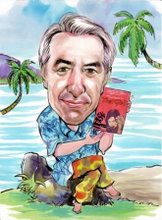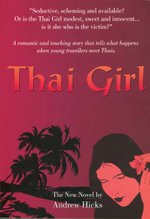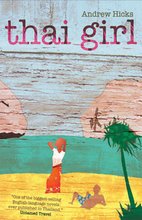








Being on Koh Chang at Christmas is no hardship, though to be honest it’s Christmas and Saturday night and New Year’s Eve and a Full Moon Party rolled into one every night of the year.
But then the morning after it’s always tranquil on the beach, clean and unsullied, the waves gently lapping ashore, the sea and mountains untroubled by the bacchanalia of the night before.
At White Sands the beach is more than two kilometers long and it offers an astounding choice of small bars and restaurants, each with its own local charm and character. It’s hard to single any out but for my hangover breakfast I love ‘15 Palms’ near to where you hit the beach when you arrive from the ferry. It’s got all the comforts inside such as leather sofas, a pool table, old prints on the wall and it serves farang food that’s always beautifully cooked and presented. We don’t wander too far away from it when we chill out on the beach during the day and then as night falls it looks quite spectacular.
’15 Palms’ is carefully lit with a designer’s flair, the pale lanterns flattering the gentle terra cotta colours, the palm trees picked out with soft spotlights. A brilliant moon rises over the jungle clad mountains, peeping through the palms and a beer or two is enough to take you tripping as you stand with the sea behind you gazing at it all, the lights reflecting on the wet sand. ‘15 Palms’ really is magic.
For a lively evening, it’s hard to beat Sabay Bar further down the beach where the mats and cushions are laid out on the sand and we recline with a cold beer and enjoy the entertainment. The bar has a Polynesian and South Seas theme and we’re harassed by natives with spears who wander round stirring things up and making sure nobody gets bored.
A Filipino band plays live music and they’re world class. The lead singer and keyboard player might have been Elton John in another incarnation. It’s only a beach bar on a small Thai island but here they play perfect covers of a huge range of songs and sing their hearts out for a baht or two. If they were in New York they’d be lionized.
Then the natives turn into fire dancers and perform for us. The fire show is the event of the evening and it’s the best I’ve seen anywhere in Thailand. On all Thai beaches, lithe young beach boys twirl blazing ropes and rods and it’s fun because they always drop them. Here it’s really professional and well choreographed, a full dramatic performance with six dancers and sometimes hula girls too, the music adding to a great atmosphere.
There’s one quiet little waiter who at the witching hour turns into the star of the fire dance. His act is incredibly varied and he comes into the audience whirling fire and doing forward rolls down the sand. He’s quaint and distinctive and everyone loves him because he wears owly little specs which look rather comic on a native in war paint and loin cloth. He tells Cat he can’t wear contact lenses because the heat of the fire would melt them.
After the fire dance, the Filipino musicians play inside the nightclub which is like a huge, high roofed native hut. The music inside is harder, the adrenalin pumping and I can feel the bass hitting my chest as it pounds out of the amplifier. It’s always packed and throbbing with dancers but tonight will be the Full Moon Party as well as Christmas Eve. It’s going to be a long, tough night!
A few night’s back Cat and I afterwards went on with some friends ten kilometers down the island to find a karaoke place. It was quite a laugh, a scruffy open sided shack run by ladyboys. Sadly there wasn’t much choice of western music and I was reduced to singing ‘Summer Holiday’ which I suppose was vaguely appropriate. I couldn’t sing ‘My Way’ though because they hadn’t got it!
Then we came back to White Sands Beach where all the bars were observing the 2.00 am curfew except one. At KC Bar we again sat on the sand and sank more Sang Som, watching fire dancers of the enthusiast kind. It was really good fun.
At KC it’s hard to tell who’s a waiter and who’s a customer. It’s very laid back, a place where work and play are rolled into one, where you eat lotus and honey and soak up sand and salt and sweat and are swept away on a tide of goodwill, wrapped in the hot blanket of the tropical night. It’s just so very Thai.
Yes, the one thing the Thais really excel at is throwing a party. On Koh Chang the mood’s always there and that’s what the jaded, winter weary westerners so love when they come here.
Just before we came to the island, we went to a party at the school in Sangkha, our local town. It’s a dull little market town out in the middle of nowhere yet the school managed a party on the scale of which I haven’t seen anywhere. Covering the football field were over three hundred tables for eight, each with nice white table clothes. A fine Thai dinner with drinks was then served with excellent service and effortless ease, a logistics exercise on a massive scale.
All the while we were entertained by music and singers of national standard on a huge stage specially erected, powerfully amplified and projected onto screens around the field to give us a close up view.
Being in Thailand is a great way of escaping Christmas, that grueling mid-winter festival. Here on Koh Chang it’s a mid-summer festival every night of the year and it’s going to be hard to leave.
















































